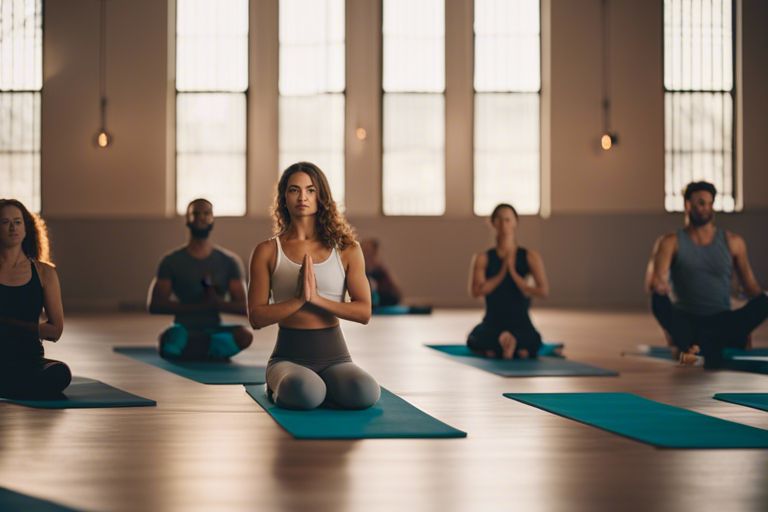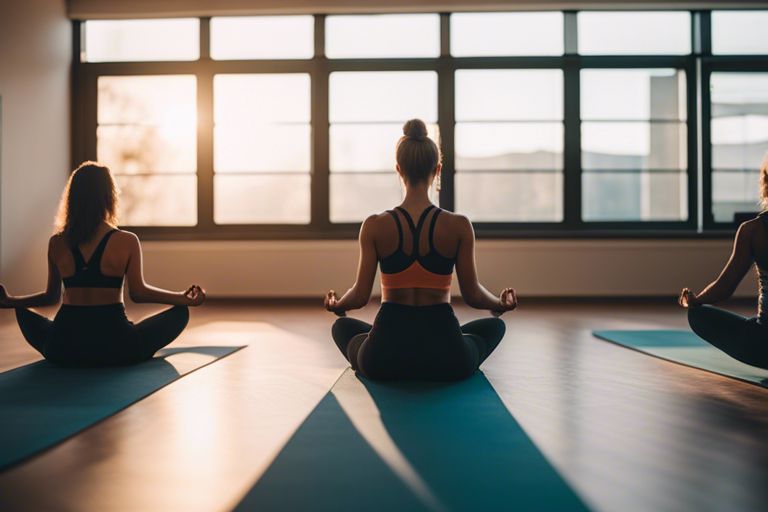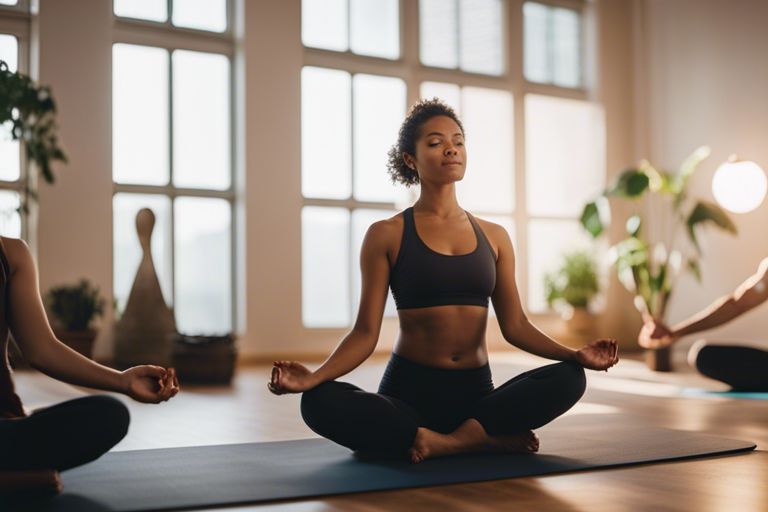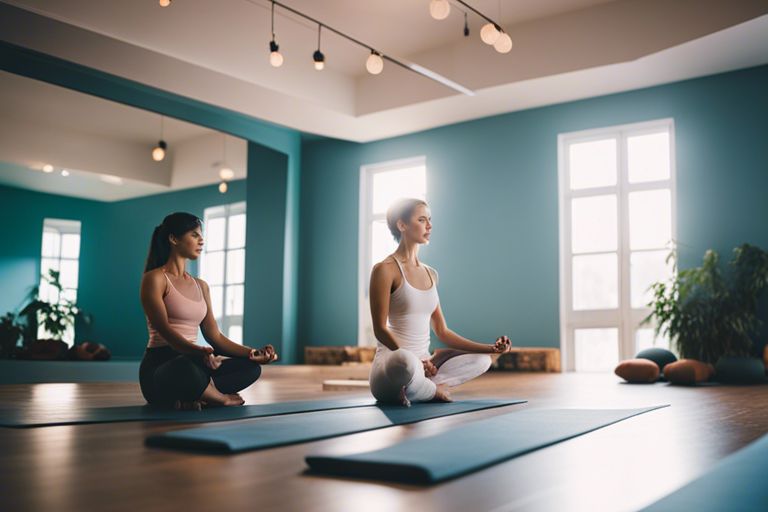This guide will walk you through everything you need to know about slow flow yoga. From its benefits for your mind and body to how it differs from other yoga styles, you will gain a comprehensive understanding of this relaxing and rejuvenating practice. Whether you are a seasoned yogi or a beginner looking to explore different styles, slow flow yoga offers a unique experience that can improve your flexibility, strength, and mindfulness.
Key Takeaways:
- Slow Flow Yoga is a gentle and fluid practice that focuses on moving through poses slowly and mindfully.
- It prioritizes breath awareness and alignment, helping practitioners cultivate a deeper mind-body connection.
- Slow Flow Yoga is suitable for all levels and can be a great way to reduce stress, improve flexibility, and build strength over time.

Understanding Slow Flow Yoga
What is Slow Flow Yoga?
Slow Flow Yoga is a gentle and introspective style of yoga that focuses on smooth transitions between poses while incorporating conscious breathing techniques. In this practice, you move slower than in a typical Vinyasa class, allowing you to explore each posture more deeply and align your breath with movement. The emphasis is on mindfulness and awareness of your body throughout the practice.
History and Origins of Slow Flow Yoga
Some practitioners believe that Slow Flow Yoga originated as a response to the fast-paced and intense nature of modern life, offering a calming and centering practice for individuals seeking a more meditative experience on the mat. It draws inspiration from traditional Vinyasa but with a slower tempo to encourage relaxation and deeper connection to each movement.
Yoga has a rich history rooted in ancient Indian philosophy and has evolved over centuries into various styles and practices. Slow Flow Yoga represents a harmonious blend of these traditions, focusing on gentle movement and mind-body awareness to help you find balance and peace within.
1. Slow Flow Yoga involves moving through poses gradually and mindfully.
2. Focus on breath and proper alignment in each pose.
3. Embrace the meditative and calming aspects of the practice.
4. Connect with your body and create a sense of relaxation.
5. Perfect for beginners or those looking for a gentle practice.
6. Benefits include improved flexibility, strength, and mental clarity.
Types of Slow Flow Yoga
Clearly, there are various types of slow flow yoga that you can explore to find the one that resonates most with you. Here is a breakdown of some popular types:
- Hatha Slow Flow
- Vinyasa Slow Flow
- Restorative Slow Flow
- Yin Slow Flow
Assume that by trying out different types of slow flow yoga, you will discover which one aligns best with your preferences and goals.
Hatha Slow FlowTo begin with, Hatha Slow Flow focuses on holding poses for longer periods, allowing you to deepen your stretches and build strength at a slower pace. This type of slow flow yoga is perfect for beginners and individuals looking to cultivate mindfulness through their practice. |
Vinyasa Slow FlowIf you prefer a more dynamic and flowing practice, Vinyasa Slow Flow may be the right choice for you. This style synchronizes breath with movement, creating a meditative flow that enhances your flexibility, strength, and balance. |
Flowing through sequences with intention and awareness in Vinyasa Slow Flow can help you connect with your breath and cultivate a sense of moving meditation.
Restorative Slow Flow
Slow down and unwind with Restorative Slow Flow, a gentle practice that focuses on relaxation and stress relief. This type of slow flow yoga incorporates props such as blankets, bolsters, and blocks to support your body in passive poses, allowing you to release tension and restore your energy levels.
Restorative Slow Flow is ideal for those looking to de-stress, recharge, and nourish their bodies with soothing and gentle movements.
Yin Slow Flow
On the other hand, Yin Slow Flow emphasizes deep stretching and holding poses for an extended period to target the connective tissues in your body. This practice helps improve flexibility, release tension, and cultivate a sense of inner calm and balance.
Hatha Slow Flow, Vinyasa Slow Flow, Restorative Slow Flow, and Yin Slow Flow each offer unique benefits and experiences, so feel free to explore and find the type of slow flow yoga that speaks to you.
Tips for Practicing Slow Flow Yoga
Unlike fast-paced yoga styles, slow flow yoga requires you to focus on the present moment and move mindfully through each pose. Here are some tips to help you enhance your slow flow yoga practice:
- Focus on your breath: Pay attention to your breath and synchronize it with your movements to promote relaxation and mindfulness.
- Listen to your body: Tune in to how your body feels in each pose and make adjustments as needed to prevent injury and deepen your practice.
- Find a qualified instructor: Look for certified instructors who are experienced in teaching slow flow yoga to ensure you receive proper guidance and support.
- Create a home practice: Establish a quiet space in your home where you can practice slow flow yoga regularly to deepen your practice and maintain consistency.
Breathing Techniques for Relaxation
Tips: To enhance your relaxation during slow flow yoga, focus on deep, diaphragmatic breathing. Inhale deeply through your nose, allowing your belly to rise, and exhale slowly through your mouth, releasing any tension in your body.
Listening to Your Body
Assuming you are new to slow flow yoga, it’s important to listen to your body and avoid pushing yourself too hard. With each practice, you will learn to distinguish between discomfort and pain, allowing you to adjust your poses accordingly to prevent injury.
Finding a Qualified Instructor
Assuming you are looking for a qualified slow flow yoga instructor, consider factors such as their certifications, teaching experience, and teaching style. For instance, you may want to find an instructor who emphasizes alignment and breath awareness in their classes.
Creating a Home Practice
Listening to your body and honoring its needs is imperative when creating a home slow flow yoga practice. Start by setting aside a specific time each day for your practice to establish a routine and maintain consistency.

A Step-by-Step Guide to Slow Flow Yoga
Preparing for Your First Class
Now, before you step into your first Slow Flow Yoga class, it’s important to prepare yourself mentally and physically. Make sure to wear comfortable clothes that allow you to move freely and bring a water bottle to stay hydrated throughout the practice. Arrive early to set up your mat and introduce yourself to the instructor so they can offer modifications if needed.
| What to Bring | Comfortable clothes, water bottle |
| How to Prepare | Arrive early, introduce yourself to the instructor |
Getting into Downward-Facing Dog
DownwardFacing Dog is a fundamental pose in Slow Flow Yoga that helps to stretch and strengthen your entire body. To come into Downward-Facing Dog, start in a tabletop position with your wrists under your shoulders and knees under your hips. Lift your hips up and back, straightening your arms and legs, forming an upside-down “V” shape with your body.
This pose not only improves flexibility in your spine and legs but also helps to calm your mind and relieve stress. Focus on pressing your hands firmly into the mat and lengthening your spine to get the most benefit from this pose.
Moving into Warrior Pose
First, stand at the top of your mat with your feet hip-width apart. Step your left foot back into a lunge position, keeping your right knee stacked above your ankle. Open your arms wide, reaching them out to the sides, and gaze over your front fingertips. This is Warrior I pose, which strengthens your legs and improves balance.
To deepen the stretch, you can transition into Warrior II by extending your left foot out parallel to the back of your mat and opening your hips to the side. Keep your arms strong and engaged as you sink deeper into the pose, feeling the power and strength it brings to your practice.
Ending with Savasana
Assuming the final pose of Savasana, also known as Corpse Pose, is vital to relax your body and mind after a Slow Flow Yoga practice. Lie flat on your back with your arms and legs comfortably spread apart, palms facing up. Close your eyes and focus on your breath, letting go of any tension or stress in your body.
Guide yourself into a state of complete relaxation during Savasana, allowing the benefits of your practice to integrate fully into your being. This final pose is a time for reflection and restoration, so make the most of it by surrendering to the stillness and peace it offers.

Factors to Consider When Choosing a Slow Flow Yoga Class
After deciding to explore the benefits of slow flow yoga, it’s imperative to consider a few important factors when choosing a class that best suits your needs. Here are some key things to keep in mind:
- Level of Experience: Slow flow yoga classes are typically suitable for all levels, but some may cater more to beginners or advanced practitioners. It’s important to assess your own skill level and choose a class that aligns with your experience.
- Class Size and Style: The size of the class and the teaching style can greatly impact your experience. Whether you prefer a more intimate setting with individualized attention or a larger group dynamic, consider what type of environment motivates you to engage fully in your practice.
- Music and Ambiance: The atmosphere of the studio, including the music selection and overall ambiance, can significantly influence your practice. Finding a space that resonates with you and enhances your yoga experience is key.
- Props and Equipment: Depending on your preferences and individual needs, you may want to consider the availability of props and equipment in the studio. These tools can enhance your practice and support you in challenging poses.
Level of Experience
Slow flow yoga is accessible to practitioners of all levels, but it’s imperative to find a class that aligns with your experience. If you are new to yoga, look for beginner-friendly classes that focus on foundational poses and alignment. For more experienced yogis, a more challenging slow flow class may be preferable to deepen your practice.
Class Size and Style
Choosing the right class size and style is crucial to your comfort and enjoyment during your practice. Some people thrive in larger group settings with energizing music, while others benefit more from smaller, more intimate classes with calming ambiance. Understanding your preferences will help you select a class that best suits your needs.
This can greatly impact your ability to connect with the teacher and receive personalized feedback, enhancing your overall yoga experience. Consider whether you thrive in a more fast-paced or relaxed environment, and choose a class that aligns with your energy and goals.
Music and Ambiance
A peaceful and harmonious ambiance can significantly elevate your slow flow yoga practice. Look for a studio with soothing decor, dim lighting, and a tranquil atmosphere to help you relax and unwind. The music played during the class can also play a vital role in setting the mood and enhancing your focus and concentration.
Props and Equipment
With slow flow yoga, props and equipment can provide additional support and assistance during your practice. Some studios offer a wide range of props, such as blocks, straps, and bolsters, to help you modify poses and deepen your stretches. Make sure to inquire about the availability of these tools when selecting a class to ensure you have everything you need for a successful practice.
Knowing your preferences in terms of class size, style, music, ambiance, and props will help you choose a slow flow yoga class that aligns with your needs and enhances your overall experience.
The Pros and Cons of Slow Flow Yoga
Now, let’s take a look at the pros and cons of practicing slow flow yoga to help you decide if it’s the right fit for you. For more detailed information on slow flow yoga, check out Slow Flow Yoga: A Beginner’s Guide to Mindful Practice.
| Pros | Cons |
| Improves flexibility and strength | Potentially slow progression in physical fitness |
| Enhances relaxation and stress relief | May not provide intense cardio workout |
| Helps in mindfulness and focus | Could be challenging for those seeking fast-paced routines |
| Allows for deeper connection with your body | Possible slower calorie burn compared to high-intensity workouts |
Benefits for Mind and Body
Assuming you are looking to improve both your physical and mental well-being, slow flow yoga can be an excellent choice. This practice not only helps in building your strength and flexibility but also promotes relaxation and reduces stress. By focusing on slow, intentional movements and the breath, you can enhance your mindfulness and deepen your mind-body connection.
Potential Drawbacks and Modifications
There’s no denying the numerous benefits of slow flow yoga, but it’s imperative to be aware of some potential drawbacks as well. If you are someone who enjoys high-intensity workouts, you may find slow flow yoga to be a bit too gentle for your liking. Additionally, if you are looking to burn a significant amount of calories in a short time, this practice may not be the most effective option for you.
The practice of slow flow yoga can be incredibly rewarding for both your physical and mental health. However, it’s important to listen to your body and make modifications as needed to ensure that you are getting the most out of your practice while staying safe. Be mindful of, it’s not about pushing yourself to the limit, but rather about honoring your body and mind in each moment.
Final Words
To wrap up, slow flow yoga is a gentle and introspective practice that focuses on breathing, mindfulness, and alignment. By incorporating slow, deliberate movements and longer holds in each pose, you can deepen your mind-body connection and experience a sense of calm and relaxation. No matter your level of experience, slow flow yoga can be a beneficial addition to your wellness routine.
Remember to listen to your body, honor your limitations, and embrace the present moment during your slow flow yoga practice. Allow yourself the time and space to fully engage with each pose and notice how your body and mind respond. With dedication and consistency, you can cultivate a greater sense of balance, strength, and inner peace through the practice of slow flow yoga.
FAQ
Q: What is slow flow yoga?
A: Slow flow yoga is a gentle and meditative form of yoga practice that focuses on moving slowly and mindfully through a series of poses. It combines the fluidity of a Vinyasa practice with the slower pace of Hatha yoga, allowing practitioners to connect with their breath and body in a deeper way.
Q: What are the benefits of practicing slow flow yoga?
A: Practicing slow flow yoga can help improve flexibility, strength, and balance. It also promotes relaxation and stress relief, as the slow movements and focus on breath help calm the nervous system and quiet the mind. Additionally, slow flow yoga can be accessible to all levels, making it a great option for beginners or those recovering from injuries.
Q: How is slow flow yoga different from other types of yoga?
A: Slow flow yoga differs from other types of yoga, such as power yoga or Bikram yoga, in its emphasis on moving at a slower pace and holding poses for longer periods of time. This allows practitioners to explore the subtleties of each pose and cultivate a deeper mind-body connection. While it still offers physical benefits, slow flow yoga is more focused on mindfulness and relaxation than the intensity of other styles.











